Unveiling the Sandstorms in the PRC
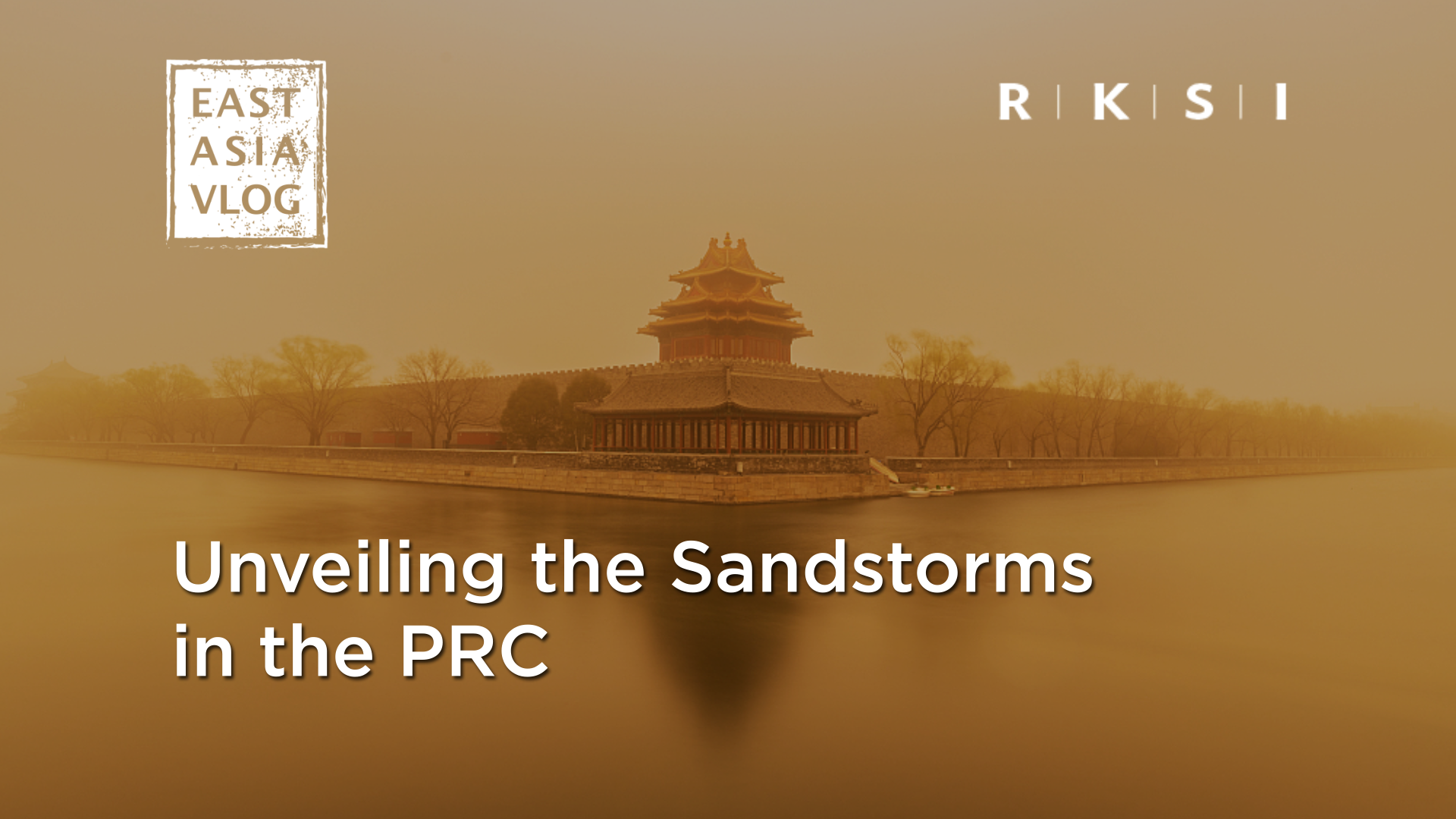

Early this year, the worst sandstorm in a decade hit Beijing, the PRC’s capital. How did this happen? What can ADB do to help tackle hazardous sandstorms? RKSI spoke to an expert who “loves desert lands”. Watch it on Bilibili.
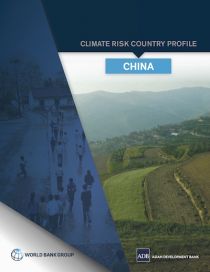
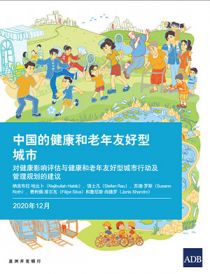


By scaling up carbon capture, use and storage, China can play a leading role in achieving the global ambition of climate neutrality
China’s commitment to achieve carbon neutrality before 2060 has been acclaimed as one of the most important climate actions in the world. Scholars at Cambridge Econometrics estimate that China’s commitment alone could cut global warming by 0.25 C-which would be a very significant contribution to the Paris Agreement’s goal of limiting global warming to well below 2 C, and preferably to 1.5 C above pre-industrial levels.
To translate the carbon neutrality vision into reality, the world needs to deploy clean energy technologies on a massive scale, starting with solar photovoltaic. Between 2010 and 2020, the global capacity of solar PV increased about 18-fold from 40 gigawatts to 707 GW. During the same period, China’s solar PV capacity increased from 1 GW to 254 GW-growing at a phenomenal annual rate of 74 percent on average. By the end of 2020, solar PV in China accounted for 36 percent of the world total, followed by the United States (10 percent), Japan (9 percent), Germany (7 percent) and India (6 percent). China is also the major exporter of solar panels, having supplied more than 70 percent of demand in international markets.
The open recipe for such a great success for solar PV includes three main ingredients: international cooperation, enabling policies by governments and economies of scale.
In 2000, solar PV was still very costly at about $5 per watt. However, that year, Germany adopted its Renewable Energy Act and began providing attractive feed-in tariffs-essentially subsidies-to the developers of solar PV, which quickly helped Germany become the world’s largest solar market. As many countries followed suit by introducing similar incentive policies for solar energy, Chinese companies, mostly private entrepreneurs, developed full supply chains for solar PV to meet the growing demand in Europe, North America and Asia, including China’s own market.
China’s solar PV capacity overtook that of Germany in 2015, and since then China has maintained its position as the world’s leading solar nation. As solar PV has been deployed at such scale worldwide, the average cost of solar power has declined by more than 80 percent over the last decade. Solar power has become the cheapest form of energy in modern history and is now being deployed all over the world including in the least developed countries in Asia, Africa, and South America.
Beyond solar energy, China is also the world leader in wind power (38 percent of the world total), hydropower (28 percent), bioenergy (15 percent) in 2020, and sales of electric vehicles in China reached 1.3 million that year, representing 41 percent of the global EV market.
While all these clean technologies are an indispensable part of the low carbon transition, on their own they will not be sufficient to achieve carbon neutrality. The modeling work of Tsinghua University shows that, before 2060 when China is supposed to achieve carbon neutrality, fossil fuels would still account for about 19 percent of the primary energy consumption mix. This means that some advanced engineering must be developed to capture the carbon dioxide molecules produced from the burning of fossil fuels, use the captured CO2 if possible, and then store it permanently underground.
Such technology, known as “carbon capture, utilization and storage”, or CCUS, is an important option for reducing CO2 emissions in the energy sector and will be essential to achieving carbon neutrality. According to the International Energy Agency, for the whole world to achieve carbon neutrality by 2070, CCUS technologies alone will need to make up approximately 19 percent of global CO2 reductions, with other clean energy technologies making up the rest.
Despite the indispensable role of CCUS in achieving carbon neutrality, its deployment worldwide has been slow-so far there are only around 20 CCUS facilities in operation around the world. One of the main reasons for this is the high cost of CCUS technology, currently around $100 per metric ton of CO2. The situation of CCUS today is similar to solar PV 20 years ago, so the world needs to apply the same successful recipe for solar PV of cooperation, policies, and scale to the development of CCUS.
The good news is that momentum is building behind CCUS. Plans for more than 30 new CCUS facilities have been announced in recent years, and despite the COVID-19 pandemic, governments and industry have committed more than $4.5 billion to CCUS in 2020. In particular, the global energy industry is counting on China to once again play a crucial role in the development of CCUS as it did for solar PV. They have good reasons for this, as China has solid R&D capacity, a complete industry supply chain, very active entrepreneurship and strong policy commitments from the government to develop CCUS.
China also has a huge domestic market for the deployment of CCUS that will help bring down the cost to a more affordable level in the next decade. In terms of incentive schemes, unlike solar PV that benefited from public subsidies in the beginning of its development, CCUS deployment will primarily be driven by market forces such as carbon pricing. In January 2021, China launched its national carbon trading market, covering 2,225 thermal power plants which account for about 30 percent of China’s CO2 emissions. The carbon price will be a strong market signal for investors in low carbon technologies, as every single dollar increase in carbon price would mean a dollar cost reduction in favor of the competitiveness of CCUS technologies.
Carbon neutrality is a global mission and so far more than 110 countries and regions have announced their intentions to pursue carbon neutrality. In this essential journey to a more sustainable future, China will cooperate with the international community and lead the way by making clean technologies affordable for the benefit of the whole world. And just as China helped to drive global take-up of solar PV, it now has a golden opportunity to do the same for CCUS and play a leading role in achieving global climate neutrality.

Chief of Energy Sector Group, Sustainable Development and Climate Change Department
This Op-Ed is reproduced from China Daily.
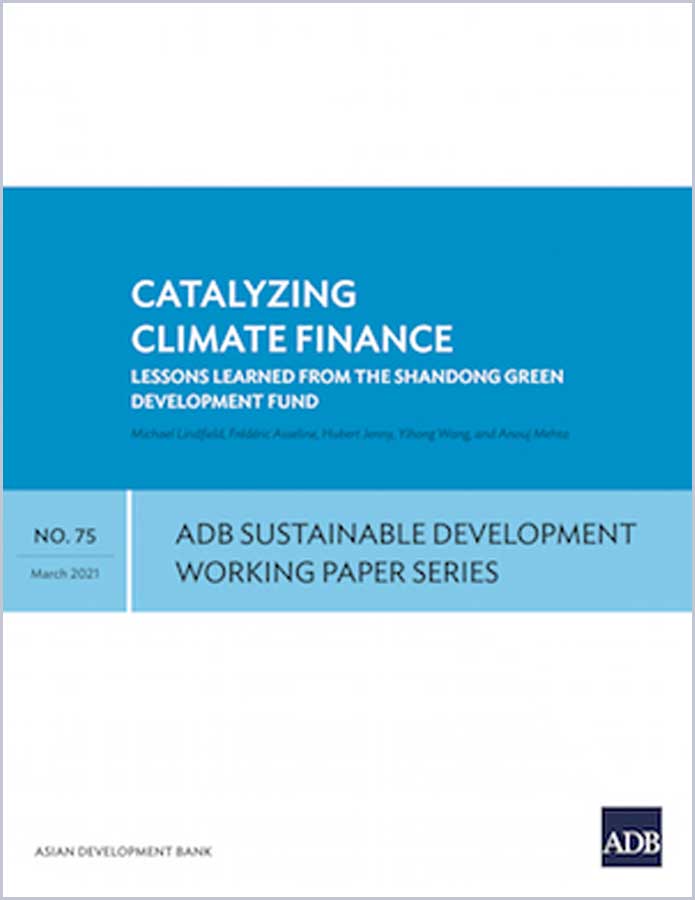
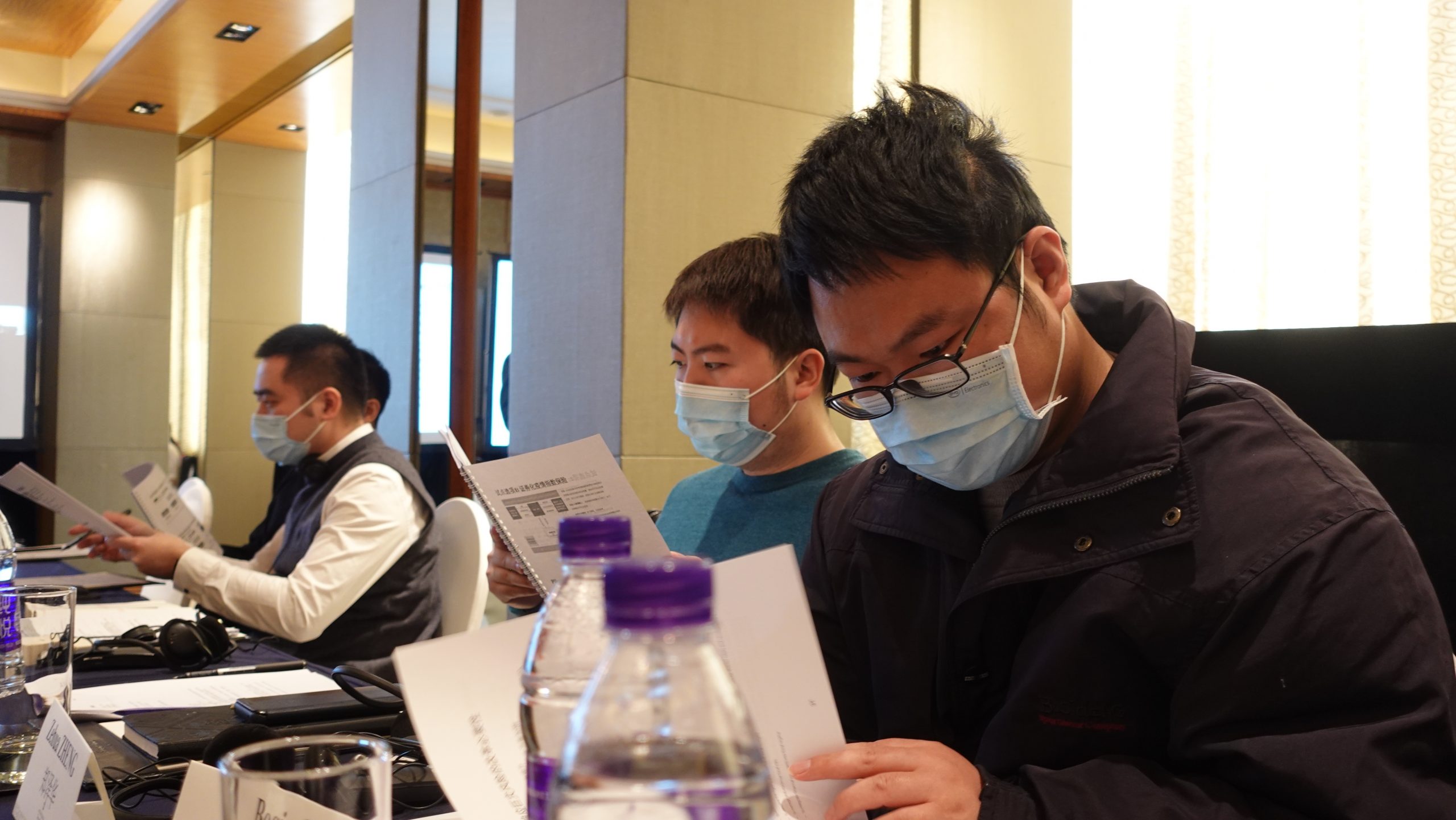
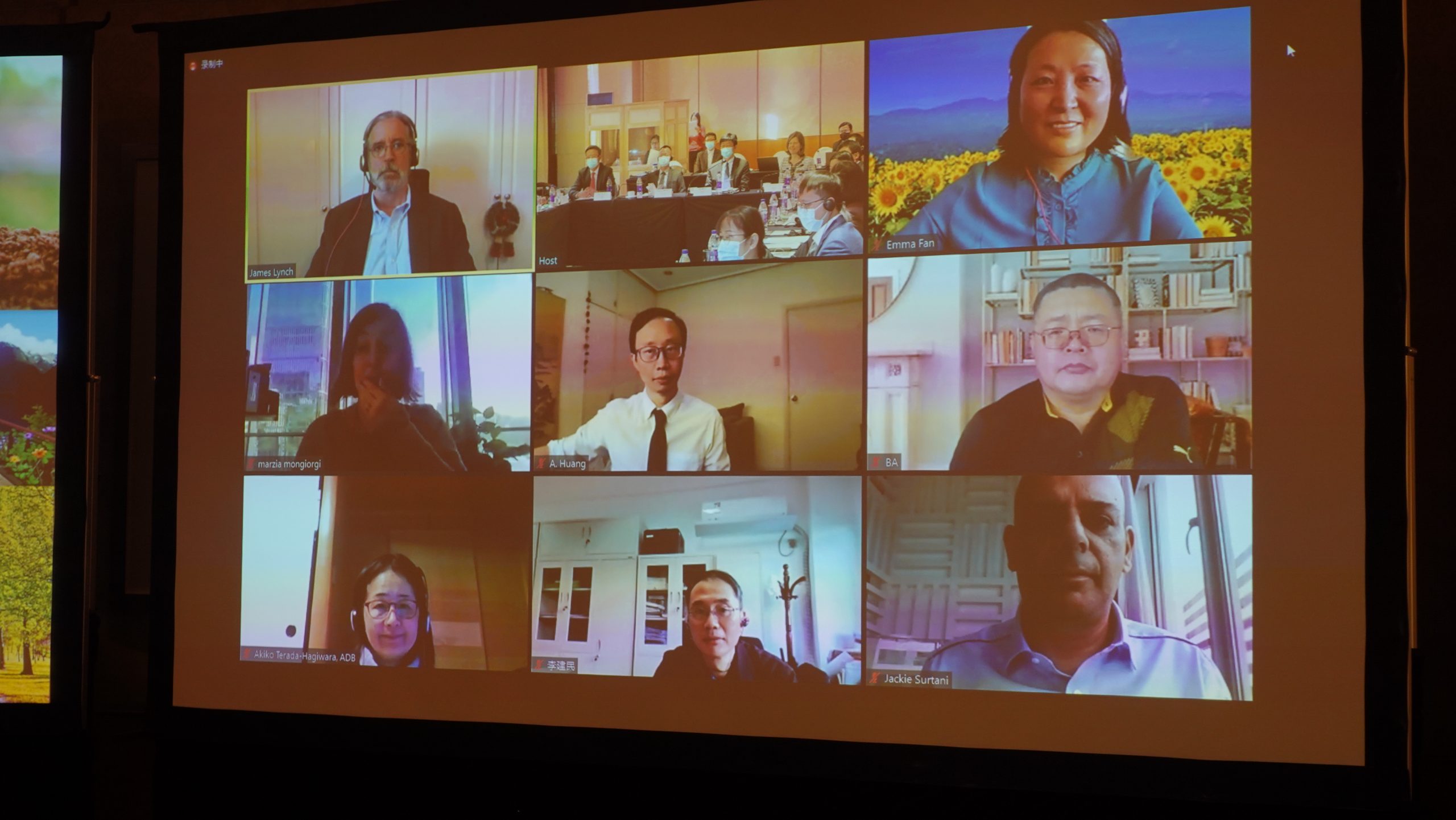
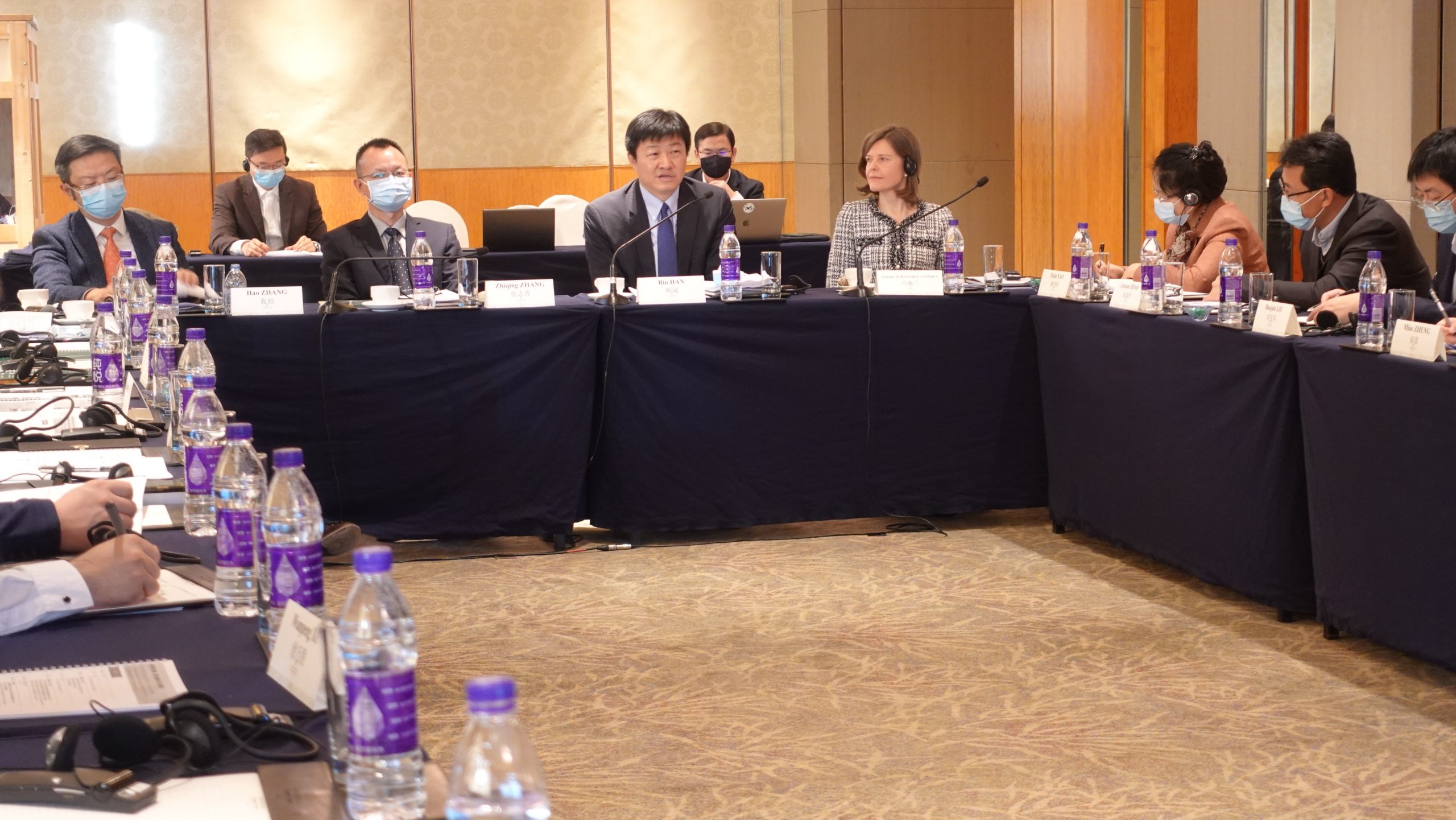
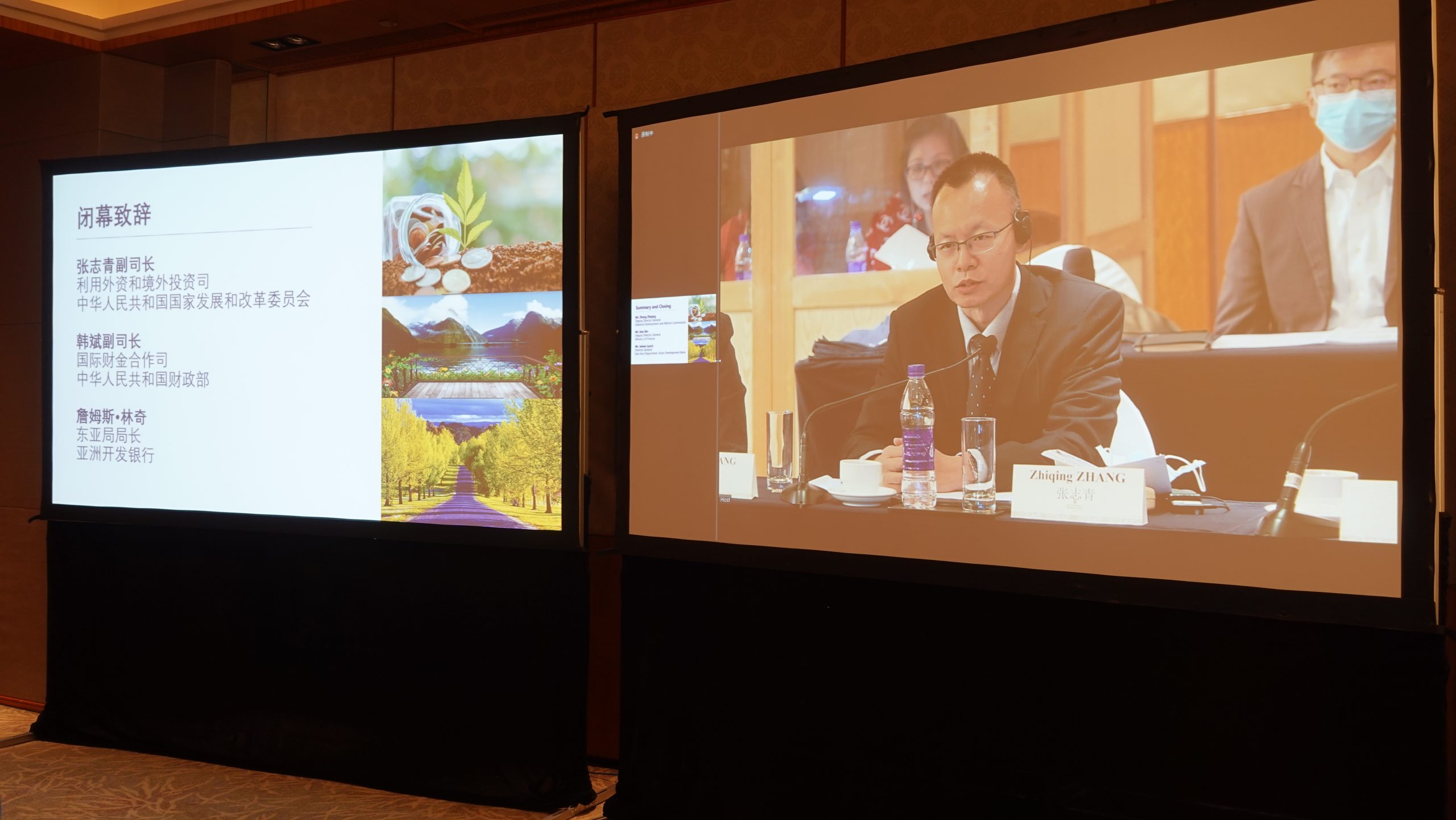
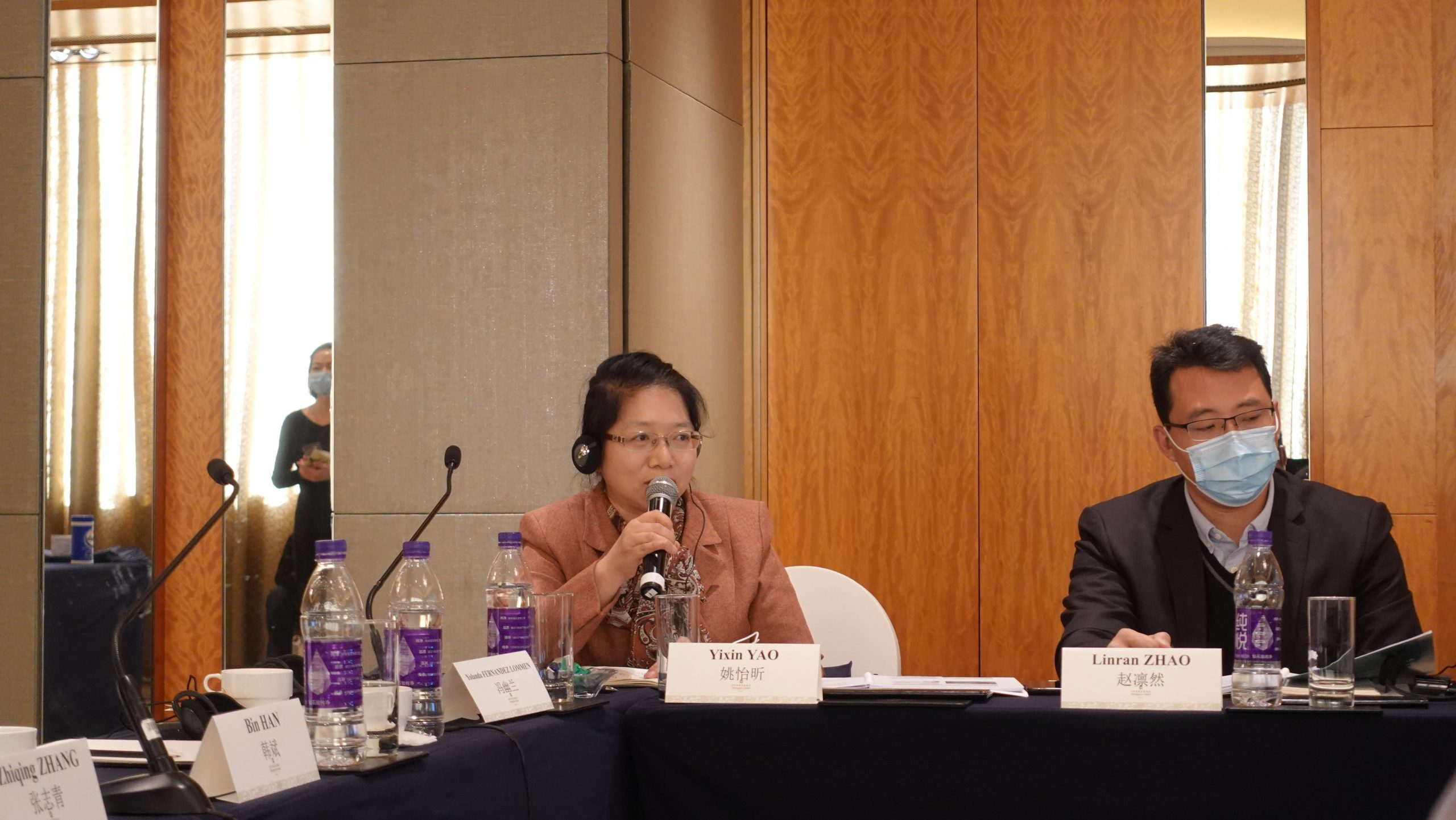
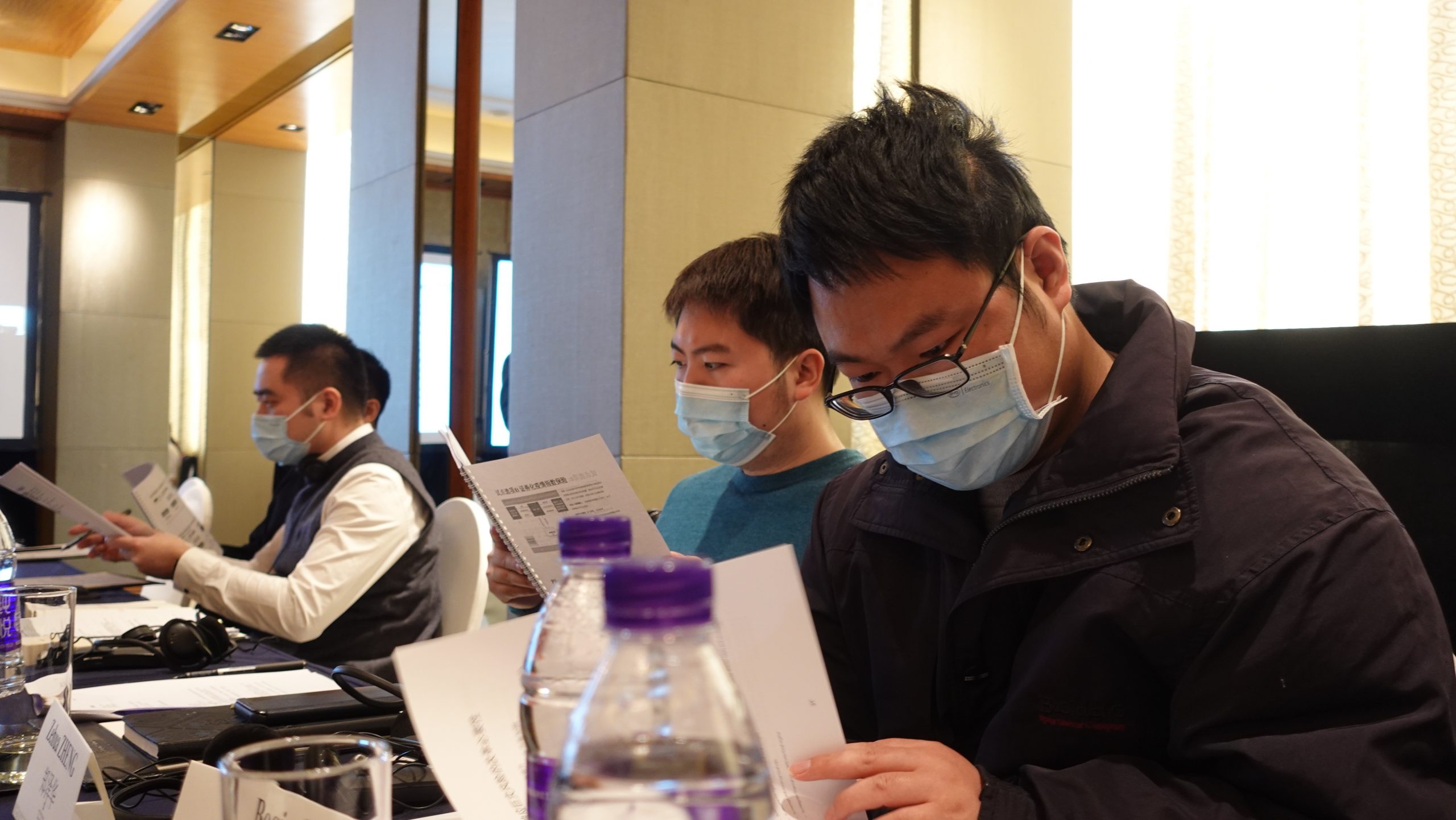
James Lynch, Director General of East Asia Department (EARD) on 16 December chaired a knowledge-sharing webinar presenting findings from recent ADB supported research on innovative financing to help bolster and scale-up PRC’s green and high-quality development. Renowned economist and thought leader in green finance, Dr. Ma Jun from Tsinghua University, and insurance expert Gary Wei discussed practical approaches on green-blue financing and disaster risk financing. Emma Fan, Director of Public Mgt, Financial Sector, & Regional Coop Division(EAPF), EAOD and Jackie Surtani, Director of Infrastructure Finance Division 2, Private Sector Operations Department (PSOD) shared thoughts on potential application of these financing innovations in sovereign and nonsovereign financial sector operations. About 40 participants, including representatives from the Ministry of Finance and the National Development and Reform Commission, participated in the event. The webinar was organized through a One ADB collaborative effort by EAPF, PRCM and PSOD.
| Time | Program |
|---|---|
| 08:30 – 09:00 | Registration |
| Session 1 | Opening Plenary Chair: Yolanda Fernandez Lommen, Country Director of the Asian Development Bank (ADB) in the People’s Republic of China (PRC) |
| 09:00 – 09:15 | Welcome Remarks
|
| Session 2 | Expert Sharing Chair: James P. Lynch, Director General, EARD, ADB |
| 9:20 – 9:40 | Presentation 1 (via Zoom) Green and Blue Financing for High Quality Growth and Green Transformation Under the 14th Five Year Plan (20 minutes) Presenter: Dr. Ma Jun, Director, Finance and Development Research Center and the Green Finance Development Research Center, Tsinghua University This presentation will provide specific suggestions on using green and blue financing to reduce carbon emissions, lower pollution, protect the environment, and improve climate change resilience, especially for peaking carbon emissions by 2030 and achieving carbon neutrality by 2060. |
| 9:45 – 10:00 | Discussion, Questions, and Answers 15 minutes |
| 10:00 – 10:20 | Presentation 2 From Pandemic to Greater Resilience: Public Financing Strategies in Response to Extreme Disasters(20 minutes) Presenter: Dr. Gary Wei, Insurance Expert This presentation will propose specific public finance measures to improve resources and preparedness for large scale disasters, such as through parametric insurance. |
| 10:20 – 10:35 | Discussion, Questions, and Answers 15 minutes |
| 10:35 – 10:45 | Coffee Break |
| Session 3 | ADB Sharing Chair: James P. Lynch, Director General, EARD, ADB |
| 10:45 – 11:00 | Presentation 3 Innovation and Applications in Sovereign Operations: Using Innovative Financing to Enrich Sovereign Financial Sector Operations(15 minutes) Presenter: Emma Fan, Director, Public Management, Financial Sector, and Regional Cooperation Division (EAPF), EARD, ADB Drawing from the expert’s presentations, this presentation will propose measures to support green finance, blue finance, and disaster risk financing operations under the next CPS and 14th Five Year Plan. The presentation will also cover blended financing. |
| 11:00 – 11:15 | Presentation 4 Innovation and Applications in Nonsovereign Operations: Examples of Innovative Nonsovereign Operations(15 minutes) Presenter: Jackie B. Surtani, Director, Private Sector Operations Department (PSOD), ADB Drawing from the expert’s presentations, this presentation will share examples of innovative nonsovereign operations in the PRC and other ADB developing member countries. |
| 11:50 – 12:00 | Summary and Closing (including final views from DDG Zhang and DDG Han) Chair: James Lynch (10 minutes) |
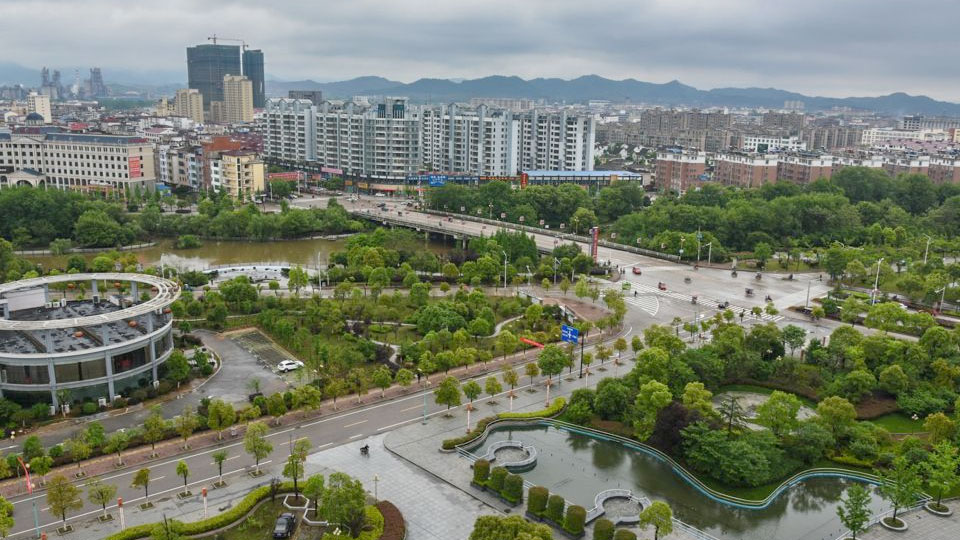
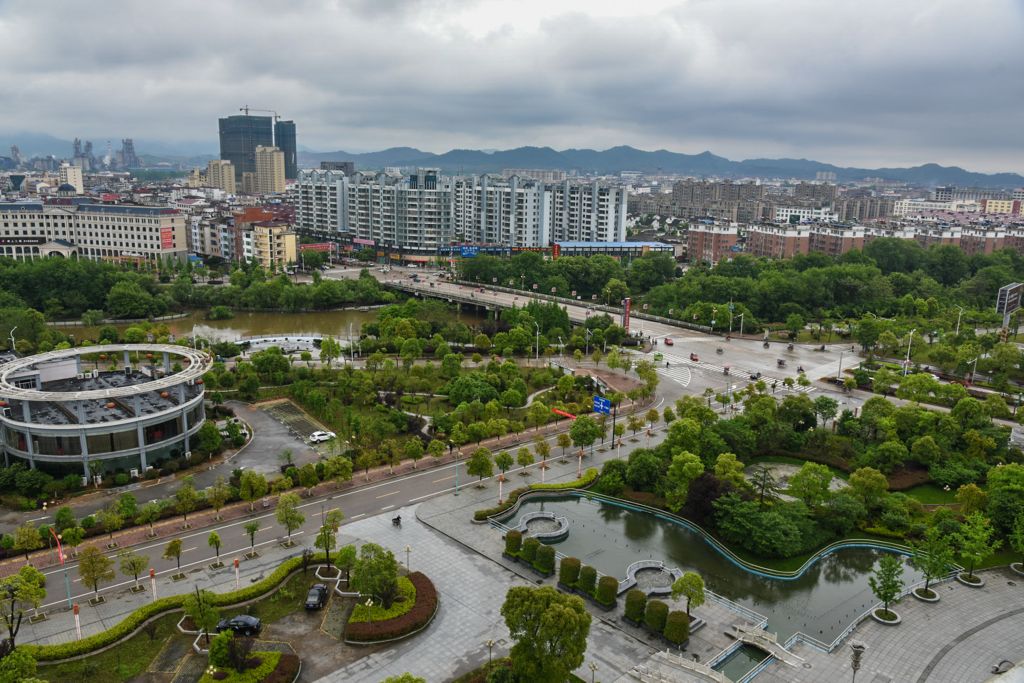
As we approach the end of the 13th Five-Year Plan (FYP) (2016-2020) of the People’s Republic of China (PRC), the country can take satisfaction in many notable achievements over the past five years.
The FYP placed significant emphasis on the environment, and set out to reduce total emissions of major pollutants and reverse biodiversity loss and degradation. We saw the concept of Ecological Civilization become enshrined in the PRC’s constitution in 2018, which prioritizes an innovative, coordinated, green, open, and shared approach to development. Ecological Civilization brought forward a new focus on the importance of natural resource management and the need to address pollution challenges around air, water, soil and plastics, and contribute to global climate and sustainability governance.
We are seeing the concept of Ecological Civilization being translated into practice in rural areas, where agriculture, farmers and rural communities have become the core focus of multi-sectoral development efforts. More sustainable use of natural resources is accompanied by a reduction in rural poverty and inequality, and greater food security. Ecological Civilization is promoting more sustainable production and consumption, along with actions to address climate change and protect natural ecosystems. As a result, economic, social and environmental welfare in the PRC’s rural areas is improving.
The forthcoming 14th FYP (2021-2025) needs to carry this positive momentum forward, as well as the concept of Ecological Civilization. The post COVID-19 economic recovery provides the opportunity to make an even stronger commitment to environmental protection and address climate change through high-quality, green and nature-positive development approaches.
Consistent with the focus on greener, more sustainable growth, the 14th FYP is expected to emphasize climate change and outline various initiatives for the PRC to meet its nationally determined contributions (NDCs) under the Paris Agreement. The recent announcement that the PRC will become carbon neutral by 2060 is a strong step in the right direction. Under the 14th FYP, new policies and measures are expected to scale up renewable energy and low-carbon, livable cities.
The theme for 2021 Global Biodiversity 15th Conference of Parties (COP 15) is also rooted in the vision of Ecological Civilization and draws inspiration from traditional and new eco-innovations. This event will adopt a ten-year global biodiversity framework (2021-2030). COP 15 offers a great opportunity for China to ensure that ecological conservation redlining, a one-health approach (human-animal-environment), and sustainable financing mechanisms for natural capital mechanism be incorporated in the 14th Five Year Plan.
The PRC is also looking to strengthen subregional development programs such as the Yangtze River Economic Belt and Yellow River Ecological Corridor by focusing on biodiversity conservation, and using eco-compensation schemes to value ecological resources and services, and ensure this value is preserved. In the spirit of Ecological Compensation, these large-scale rural vitalization programs focus on improving livelihood opportunities for the people and communities in rural areas. This also includes support in the agriculture and tourism sectors, improving access to finance for farmers, households and small businesses as well as efforts to ensure the provision of basis services such as health and education.
The 14th FYP represents both an opportunity and a critical roadmap to achieve high-quality development while advancing renewed forms of international cooperation. Integrating ecological protection and nature-positive approaches will require concerted efforts and the design of a comprehensive set of transformative policies. Three actions will be paramount to achieve these ambitious goals.
First, climate adaptation and mitigation measures must be integral to natural resource management to enhance their impact on the ground. Strengthening linkages among sustainable agriculture and food systems, integrated natural resources and disaster risk management will be critical to enable decision making for climate-resilient investments.
Second, improve natural capital accounting and market-based mechanisms to catalyze green finance in the Yangtze and the Yellow river basins. This will only be possible if coherent policies offer scope for better allocation of funding in areas with high ecological and high conservation value and are aligned with national land-use planning.
Third, incorporate biodiversity conservation into the PRC policy framework of green finance. A crucial step in this direction will be to nurture innovative financial mechanisms for rural vitalization and ecological protection. Other actions needed include accelerating piloting and deployment of new technologies, partnering with innovative companies to improve agriculture value chains by leveraging small entrepreneurs, and enhancing financial disclosure mechanisms to mitigate biodiversity risks.
The ADB has been a partner with the PRC in supporting higher quality and greener development during the 13th FYP, and this focus will remain the cornerstone of our partnership in working together toward a more sustainable future for the PRC, and the Asia and Pacific region.

Director General, East Asia Department, ADB
This Op-Ed is reproduced from Asian Development Bank.
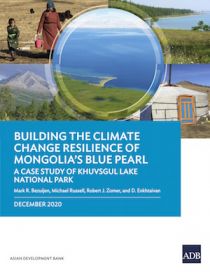
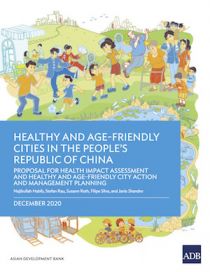
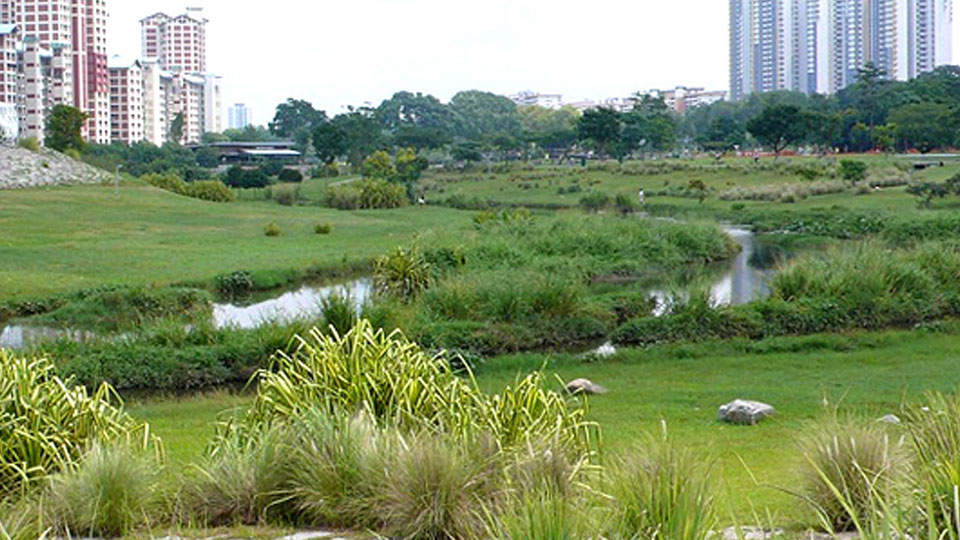
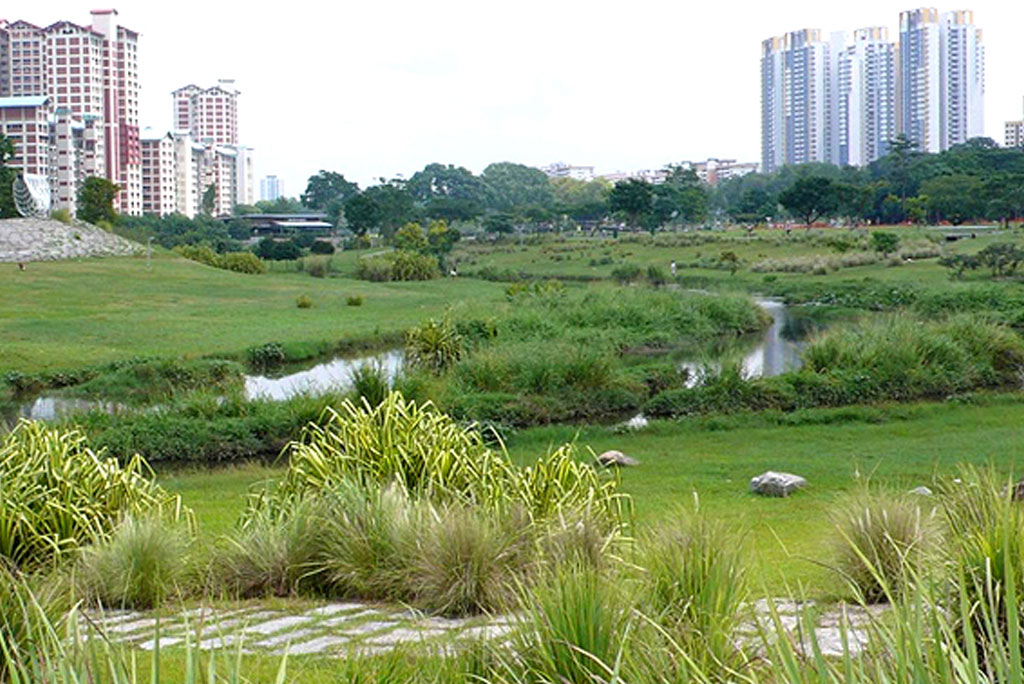
Ecosystem-based adaptation solutions can reduce vulnerability and build resilience of urban areas to climate change.
Introduction
Redeveloping urban areas through climate adaptation measures can make cities more resilient to the hazards of extreme weather and better cope with water surplus or shortage, heat stress, and land subsidence. Moreover, implementing such measures can result in co-benefits for public health, biodiversity and social well-being.
Cities are designed according to current or past conditions. Land-use changes because of continuous population growth. Urbanization can lead to reduced infiltration, increased runoff and water demand, and urban heat island effect. This urbanization leads to reduced infiltration, increased runoff and water demand, and urban heat island effect. Climate change can also magnify existing risks and vulnerabilities of urban areas to flooding, drought, and extreme heat.
Soil and vegetation naturally absorb 90% of rainfall through infiltration into the ground and evaporation into the air, while hard city surfaces like asphalt, pavement, and roofs rapidly shed water, creating huge volumes of fast-flowing runoff. Developed areas create over 500% more runoff than natural areas of the same size.
Ecosystem-based (or nature-based) solutions have been developed over the past decades in response to the growing need to improve urban resilience as well as environmental sustainability. Digital tools, such as the Climate Resilient City Tool, are available to help urban planners evaluate climate risks and promote collaboration of stakeholders for ecosystem-based adaptation measures.
What is ecosystem-based adaptation?
Inspired and supported by nature, ecosystem-based adaptation measures are cost-effective solutions that harness ecosystem services to reduce vulnerability and increase the resilience of cities to extreme rainfall, drought and heat–aggravated by climate change. Ecosystem-based adaptation measures follow the basic principles of conservation, sustainable management, and restoration of ecosystems. These include soft and hard engineering measures to develop green or hybrid (green–blue–grey) solutions that integrate plants, water systems, and green infrastructure. They provide environmental, social, and economic co-benefits and help people adapt to the impacts of climate change.
Figure 1: Ecosystem Services of Nature-Based Solutions
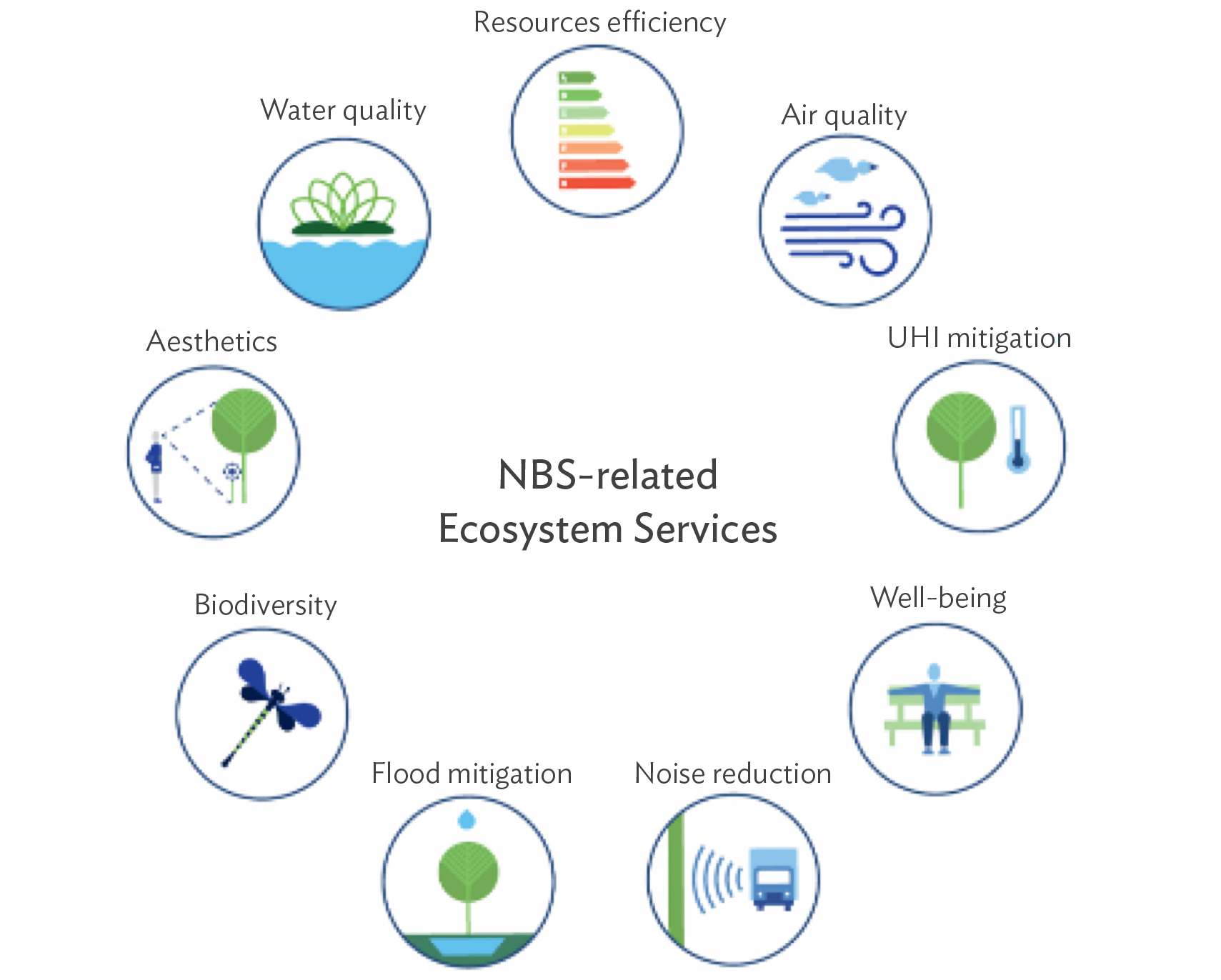
Measures that promote ecosystem-based adaptation improve a city’s climate resilience by enhancing infiltration and evapotranspiration,2 and capturing and reusing stormwater. The goal is to restore a city’s capacity to harvest, absorb, infiltrate, purify, store, use, drain, and manage rainwater. They mitigate the water discharge from heavy rainfall, retain and degrade pollutants, reduce the amount of stress on a city’s wastewater treatment facilities, and help maintain the natural water cycle. Examples of these measures include green roofs, porous pavements, raingardens, bioswales, rainwater tanks, smart irrigation, and urban forest. (See the examples of 43 ecosystem-based adaptation measures.)
Environmental, social, and economic co-benefits derived from ecosystem-based adaptation measures include:
Apart from improving the city’s livability and creating a healthier and more attractive city, ecosystem-based adaptation activities can further contribute to the sustainable use of energy and urban resources while enhancing the urban ecosystem and biodiversity. Through urban regeneration, they can help revitalize neglected areas and increase land value and government revenues. Recreational spaces that use ecosystem-based adaptation measures improve people’s well-being and create tourism services, that in turn, can create jobs and stimulate local economies.
What is the Climate Resilient City Tool?
Urban climate resilience planning involves multiple participants. Planning, implementation, and maintenance of ecosystem-based adaptation measures require the cooperation of city bureaus and departments, each with the need to adapt their policies, procedures, regulations, and practices.
In order to support cities in climate resilience planning and design, there are science-based tools available for hazard exposure and vulnerability analysis. Some tools present an overview of potential solutions and/or best practices to mitigate the risks. One of these tools is the Climate Resilient City Tool, an information and technology-based urban resilience and adaptation planning support tool that was developed by Deltares to assess climate risks, identify key flood-prone areas, and support collaborative spatial planning of ecosystem-based adaptation measures. The web-based tool can be accessed using a touchscreen device for collaborative design planning or a single personal computer to individually explore adaptation options.
The Climate Resilient City Tool provides an initial quantitative estimate of the resilience capacity improvement, co-benefits, and associated costs of the proposed adaptation measures. This will allow design participants to collaboratively explore alternative choices and come up with an initial concept. The initial design can then be used as input for a more detailed design of the landscape and drainage plan of the project area.
It facilitates dialogue among stakeholders to identify priority areas for climate resilience improvement. Policymakers, government authorities, planners, designers, and practitioners can work together to determine the requirements of the priority areas and set the adaptation targets. It is a user-friendly way to practice collaborative city development planning that allows representatives from various bureaus and organizations to discuss multi-disciplinary concerns, co-create adaptation scenarios, and co-design a conceptual plan of a resilient and attractive blue-green infrastructure for a community. With detailed information provided for 43 ecosystem-based measures, design participants can select specific interventions that can be implemented at the street or block level.
Ecosystem-based Adaptation Measures in an ADB Project
The Asian Development Bank (ADB) supported the preparation of a localized version of the Climate Resilient City Tool for the city of Xiangtan in Hunan Province, People’s Republic of China. Information on the effectiveness and costs of ecosystem-based adaptation measures have been adjusted for local conditions.
Xiangtan is an old industrial city undergoing rapid urbanization and industrial transformation. Some areas have been experienced flooding because of increased rainfall and drainage capacity has been exceeded. The Climate Resilient City Tool, developed in English and Chinese, was used in the project preparation of the urban climate resilience component of the Xiangtan Low Carbon Transformation Sector Development Program. A flood hazard map was generated for Xiangtan based on an analysis of local conditions.
Climate resilience experts trained local government authorities and other stakeholders on urban hazards and challenges, urban climate resilience, adaptation planning, and nature-based solutions, including ecosystem-based adaptation measures. In the design workshop, participants used the Climate Resilient City Tool to prepare a concept design for two project areas.
A new hospital to be constructed in Xiangtan is located in a critical flood-prone zone and requires more than 5,000 cubic meters of retention, detention, and storage capacity for pluvial flood protection. The concept design considered several ecosystem-based adaptation measures, including rainwater gardens, systems for rainwater harvesting, catch pits, permeable pavement, urban wetlands, and green roofs. These measures aim to create large peak storage volumes for drought resistance and flood protection, as well as improve runoff water quality and enhance green spaces.
Initiatives to be implemented on and along one of the main roads involve converting trees to tree pits, creating rain gardens for treating stormwater from the side pathways, modifying or relocating catch pits to new rain garden areas, creating porous pavement for cycle lanes and pedestrian walkways, and developing subsurface infiltration for water storage under cycle lanes and pedestrian walkways. These will improve infiltration, reduce runoff pollution, decrease drainage and peak volumes of stormwater, and improve the landscape and street aesthetics. These will help strengthen biodiversity and support Xiangtan’s transition into a “sponge city.”3
Conclusion
Ecosystem-based adaptation measures are among the most effective ways of advancing climate resilience by integrating the use of biodiversity and ecosystem services while maximizing co-benefits.
Collaborative city development planning is needed to discuss multi-disciplinary concerns and co-create conceptual plans for a resilient and attractive city.
Applications of the Climate Resilient City Tool in various settings and contexts in several cities have illustrated the added value of the toolbox in bringing policy and practice together with the help of science for a more water-robust and climate-resilient urban environment.
ADB. 2020. $200 Million in ADB Loans to Demonstrate a Low-Carbon and Resilient City Growth Model in Xiangtan, PRC. News Release. 13 October.
ADB. China, People’s Republic of: Xiangtan Low-Carbon Transformation Sector Development Program.
Deltares. Climate Resilient Cities Toolbox.
Deltares. Ecosystem-based Adaptation Measures Available in the Xiangtan Climate Resilient City Toolbox.

Senior Urban Development Specialist, South Asia Department, ADB

Team Leader, Urban Land & Water Management, Deltares

Urban Water Management Specialist, Deltares
This blog is reproduced from Development Asia.
© 2025 Regional Knowledge Sharing Initiative. The views expressed on this website are those of the authors and presenters and do not necessarily reflect the views and policies of the Asian Development Bank (ADB), its Board of Governors, or the governments they represent. ADB does not guarantee the accuracy of the data in any documents and materials posted on this website and accepts no responsibility for any consequence of their use. By making any designation of or reference to a particular territory or geographic area, or by using the term “country” in any documents posted on this website, ADB does not intend to make any judgments as to the legal or other status of any territory or area.
